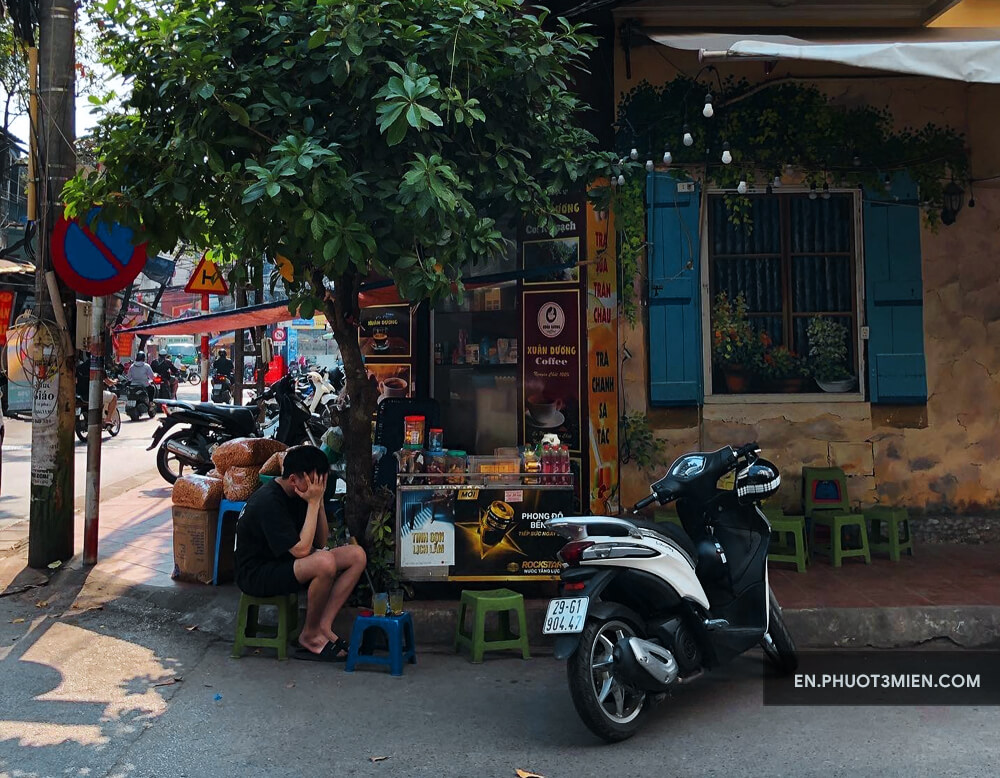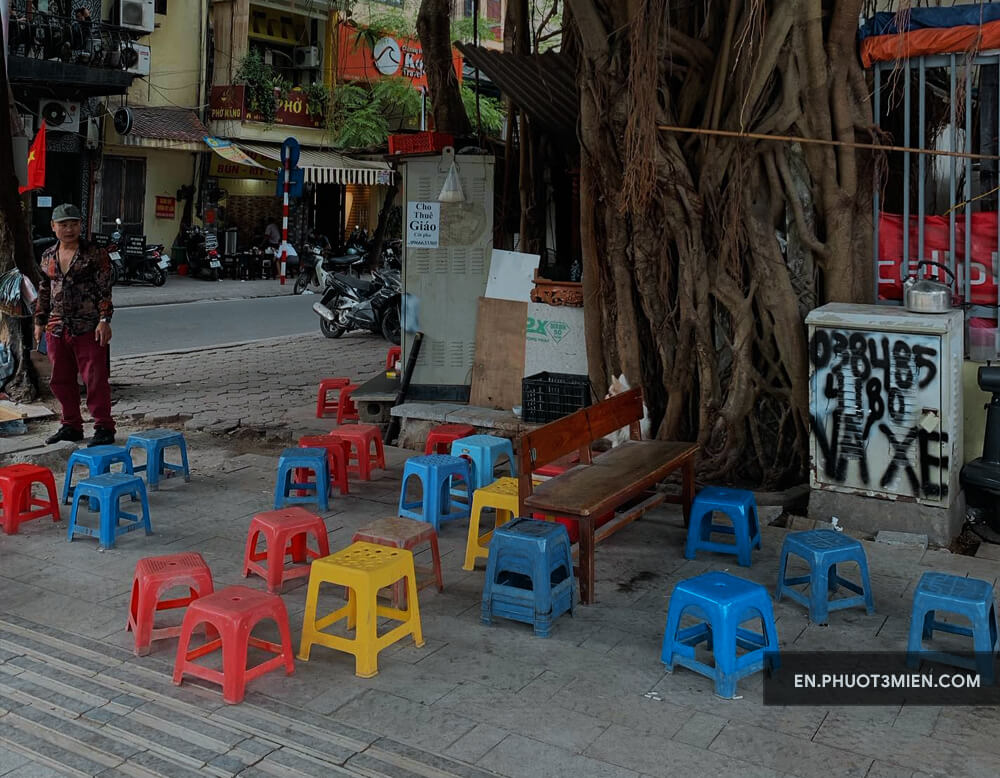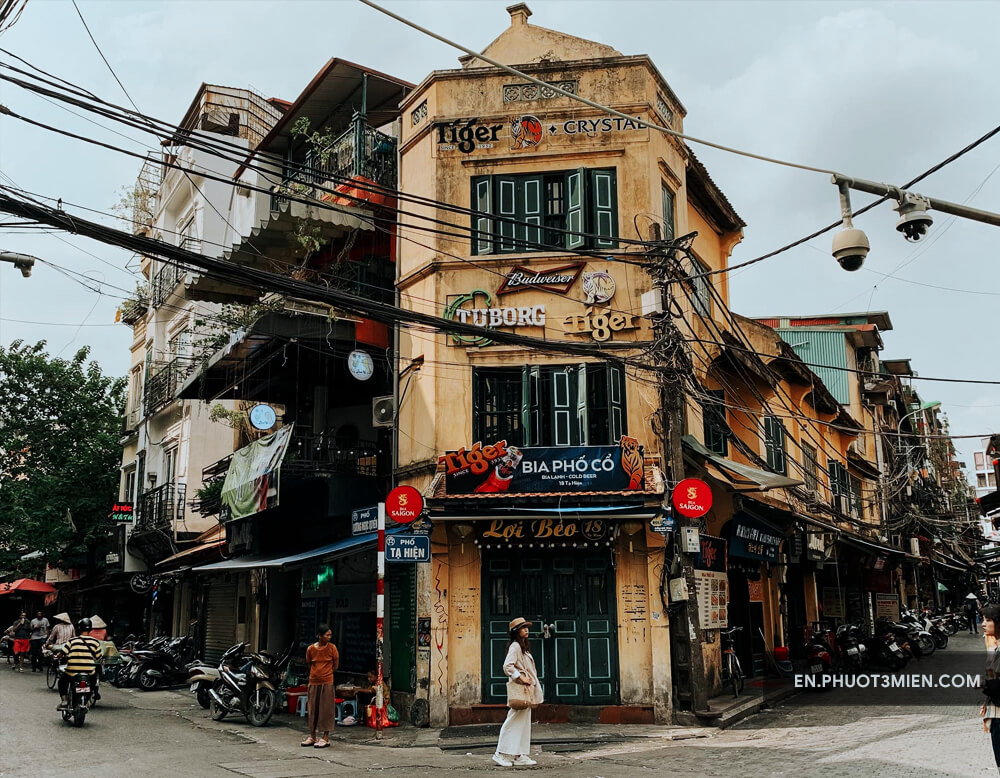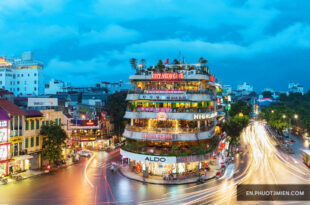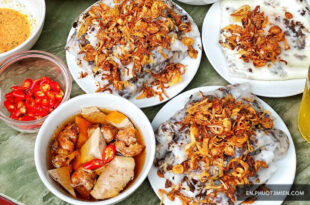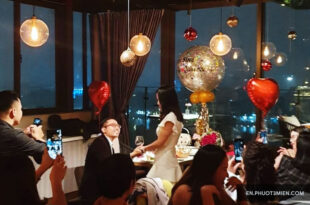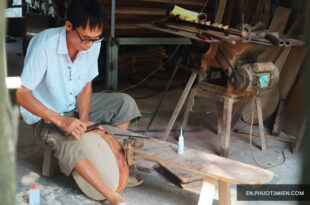Hanoi has so much to offer. When you are in Hanoi, you can choose to stay in a five-star hotel with great facilities, visit glorious shopping malls, and witness Rolls Royce cars stuck in the middle of congested traffic.
Hanoi is perfect for a trip of cultural exploration. Its culture is expressed in many of the remarkable attractions of the city. The culture, too, is in every activity that you see on the street. In this article, I will go through several casual cultural spotlights of Hanoi. A random cultural experience of the city, an idea of what to expect when you set foot in town, this is what you will explore after reading this article.
Contents
Buddhism & Confucianism in Hanoi Culture
and How to Behave Properly
If you have noticed how the young lower their heads when greeting their elders, you will have observed that there are certain sets of etiquette that need to be considered when you talk to a true Hanoi-an. Since 1009, Hanoi has been the capital of Vietnam. King Ly Thai To grew up in a pagoda, so Buddhism became the national religion, greatly influencing people’s lifestyle since. You will likely find that the people of the North have a deep faith in Buddha and the Above. Hence, be respectful when you mention Buddha and God in your conversations.
During the feudal time, the Vietnamese followed Confucius’ teachings which placed a high importance on the social hierarchy. In life today, this influence is echoed in the way that elders show great love toward the younger generation, and the younger generation returns this love with true respect. I believe that if you go shopping and show such respectful manners to the elder vendors, you’re doing yourself a big favor! You should also respect the distance between a man and a lady in recognition of the cultural beauty.
Nonetheless, due to the side effects of Confucian thought, the self-esteem of many people from the North of Vietnam is a bit high. Some still dwell on facial beauty and at times, they might boast about themselves. This is only a very small minority!
Com Lang Vong – The Specialty of Hanoi
Hanoi may not be the Hanoi of the past without its authentic traditional handicraft villages, and unique century-old culinary culture, among which Com Lang Vong is of the most well-known. Once you try this dish, Hanoi’s rich past may suddenly flood your senses. The Hanoians call it the Gift of Young Rice. This specialty dish is made of yellow-flower sticky rice. Although this type of rice can only be harvested twice a year, its best taste is during the Autumn harvest, when the weather turns cold.

While Hanoi is not the only region that produces Com (rice), the most elegantly flavored Com is from Vong village – today it is in Dich Vong Hau Ward, Cau Giay district, Hanoi. Here, villagers retain a dedicated process of making Com. First, the rice must be harvested before it gets fully ripe (at which point the seed is still a bit milky). Second, people do not thresh but slip their hand along the rice stem to collect its seeds. Seeds are roasted, then skillfully husked immediately. During the husking process, seeds are hand stirred upside down to ensure that the whole batch is equally processed and the softness is right. Husked seeds are wrapped with lotus leaves. And if you ever notice, lotus leaves contribute a more delicate flavor to Com than other types of wrapping leaves.
The whole process can be documented. However, nowhere else in Vietnam today can make a better version of Com than in Vong village. I like to attribute it to people’s caution and dedication, which makes up the heart of Hanoian characteristics, women’s characteristics in Vong village in particular.
If you are in Hanoi, you should head to Dich Vong Hau Ward to buy Com Lang Vong. To enjoy this Com, it is best to eat with a particular Vietnamese type of banana called Chuoi Tieu, or to eat it with persimmon. People also enjoy cracking Com while having a morning tea.
In case you are looking forward to trying best Hanoian casual food, check this article out.
Iced-Tea on the Sidewalk – Tra Da Via He
Sidewalk iced-tea (Tra Da Via He) will take you on an authentic experience to discover the casual lifestyle of the capital people. Like many other big cities in Vietnam, Hanoi has many glorious restaurants where you can spend some hundreds of thousands of Vietnamese dong on one drink. Hanoi also has sidewalk stalls everywhere where you only have to pay ten thousand VND to watch the street change from morning till night. Sidewalk cafe stalls are the norm of Vietnam. But in the North, people tend to order a tea rather than a coffee. Tea has been with this country throughout its thousand-year-old history.
However, before the 90s of last century, northern people tended to drink either hot or warm tea. The tea is brewed from green or dried tea leaves. During the 90s of the last century, the younger generations started to add ice to their tea. Now, the tea is often enjoyed with ice as a result of the younger generations!
When you enjoy tra da via he, you are not enjoying the Vietnamese Art of Tea, surely! You are enjoying an Art of Casualty. Men play chess on the sidewalk with an iced-tea beside them, men crack sunflower seeds and chew the day away with an iced-tea placed on a child-like stool in front of them, men chat politics with an iced-tea in their hands. You will barely see ladies hanging out with a Tra Da Via He, except for groups of school girls. That is the culture of the city! Ideally, ladies are supposed to be at home managing the housework after work. Other ladies are busy in cafés with AC.
To feel what it’s like to enjoy a tra da via he in Hanoi, I recommend taking a local friend to accompany you. You will feel the atmosphere, and your friend can explain the stories around you. Here are several places to enjoy Tra Da and sightseeing: Hoan Kiem Lake (usually referred to as “Tra Da Ho Guom”), West Lake, and anywhere in the Old Quarter. If you don’t know where to go and how to get to these places, check out my previous article on Getting Around Hanoi. You can enjoy tra da via he either in a no-name stall or in one of these Hanoi’s oldest and most authentic cafes.
Shopping in the Market
Although supermarkets and grocery stores are growing constantly in town with great shopping conditions, the habit of shopping in markets is still a beautiful cultural part of the city. In such markets, you will enjoy bargaining with small traders, discovering bunches of local foods, and once in a while, you may happen to spot the rustic beauty of a flower stall on the sidewalk.
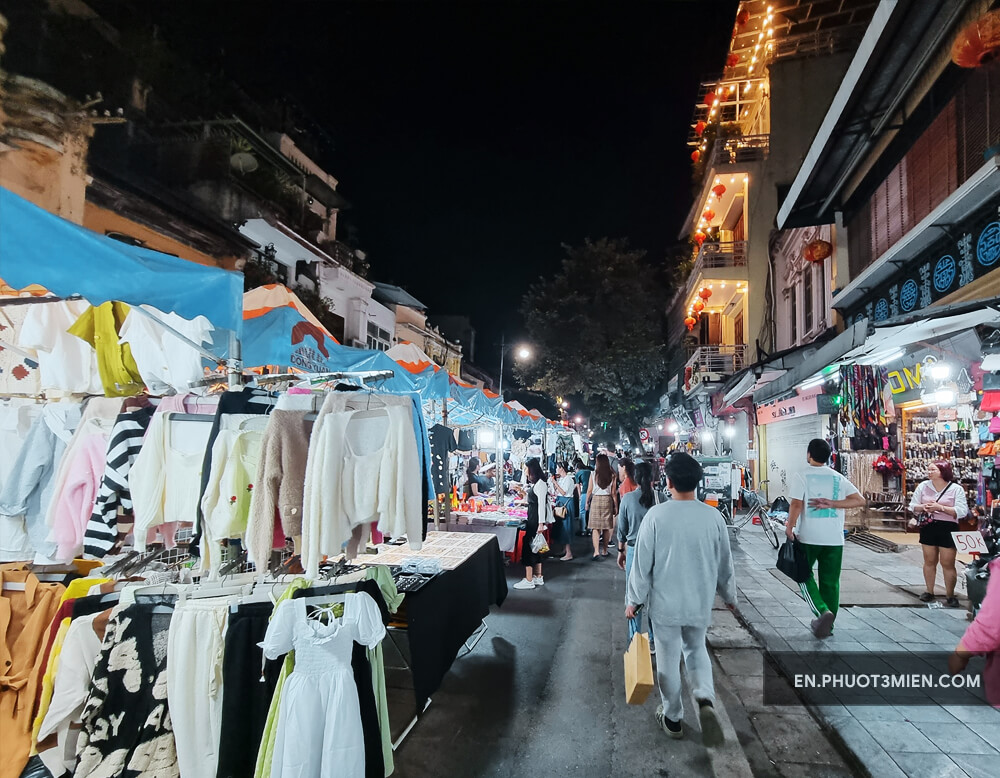
Nevertheless, if you happen to be tailed by some street vendors trying to sell you trinkets, and your effort of refusal seems hopeless, don’t freak out. You can try:
Pro Tips:
- Strictly saying “khong” (means “no”) with a tough face.
- Try selling something back to the vendors with the same attitude they used with you. One foreigner tried this, and guess what, it worked!
- Don’t forget to bargain when you buy stuff, especially in the northern Vietnam cities. Bargaining has become a culture in the market. As a foreigner, don’t be afraid to bargain by cutting the price in half, except for food. Pay a price you feel comfortable with.
- If you do not know Vietnamese numbers, try using the calculator on your phone to bargain or even hold up fingers to signify the amount you wish to pay.
You can visit these places for casual shopping experiences in Hanoi:
Night Flower Market
Located near West Lake, the flower market named Quang Ba is always crowded until 2 AM. Every day, there are two trading periods, one from 2 AM – 4 PM for the wholesale, one from 4 PM onward for street stall vendors’ early purchase. As you might guess, the later period offers much higher prices than the earlier selling period.
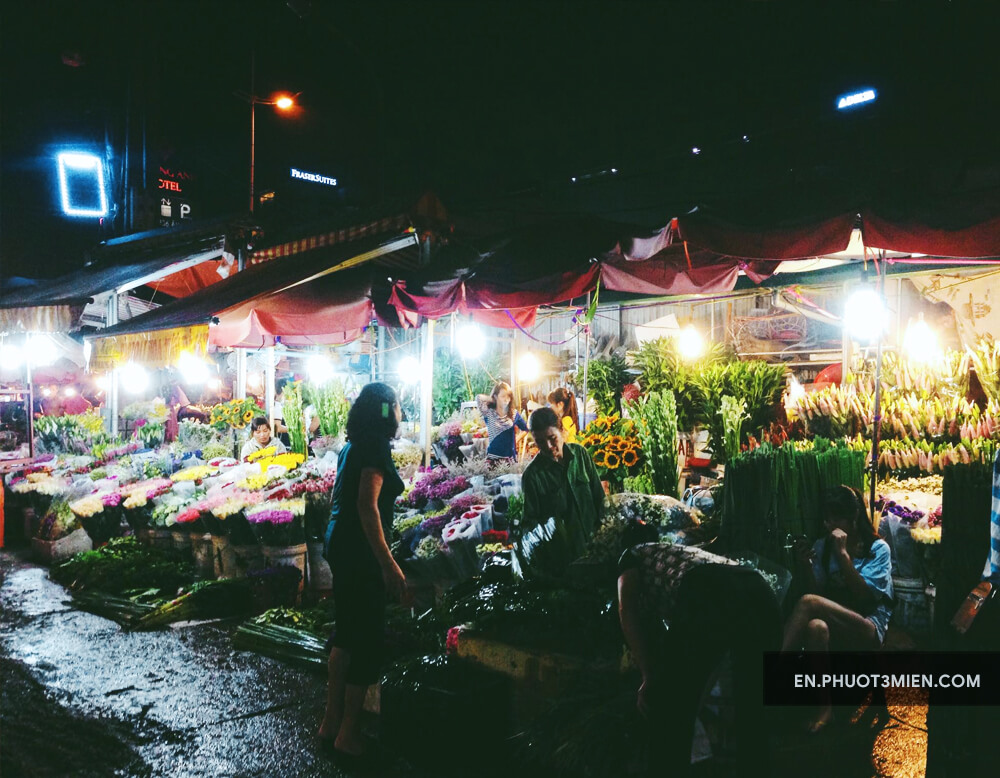
Night Wholesale Market under Long Bien Bridge
For the past 20 years, this wholesale market has been crowded because it supplies food to all places of the city. The market is most worth seeing from 12 PM onward when truck after truck unloads its commodities into town. There are a wide variety of commodities and fruit, but the most significant item sold here is fruit. Small stalls around the entrance are dedicated to retail for customers, while stores inside the market target only traders. If you want to visit this place, watch out for the line of trucks entering and exiting frequently. If you are a foreigner, I highly recommend having a local tour guide. You can park your motorbike with 10,000 VND parking fee.
From here, you can walk to Long Bien bridge, contemplating the whole view of the market and parts of the Old Quarter from above.
Dong Xuan Market
As one of the most well-known wholesale and retail markets of the North, Dong Xuan market is a cannot-miss destination when you are in Hanoi. When my father visits the capital, he recalls his days hanging around Dong Xuan market with his colleagues back when he attended university. The market was crowded, full of food, but not very clean. Built in 1889 after the terrifying fire of 1994, Dong Xuan market was rebuilt into a bigger space with three stories, but parts still remain of the previous architecture.
On Friday, Saturday, and Sunday night, the night market takes place. Prices do not vary much from stall to stall, hence, just buy it when you find it with a reasonable price. If you are looking for sporty clothes, buy them here since the market is big.
Visiting the Old Quarter
The Old Quarter is the highlight of Hanoi culture! There are ways to discover this quarter, however, certain cultural spotlights should be considered:
Backpacker Area
Similar to Bui Vien town of Saigon, Ta Hien street is the destination of many Westerners traveling to Hanoi. With beer as the spotlight of the place, travelers will find nowhere as crowded, as casual, and as filled with rustic “cool beer” restaurants anywhere else in the city. Beer blurs all the country borders. Beer brings people from different languages together, singing the same melody and laughing at the same rhythm. You will hear the locals getting to know the Westerners with cheers ringing through the streets: “Mot, Hai, Ba, Yo!”
You will not see another place that utilizes communicative hand gestures more than the backpacker area, but you will surely find nowhere more cherished than this. It’s open the whole day, but most chill at night!
The Tree-lined Street
Do you notice that roads in the Old Quarter are named after a commodity? When first established, this area was the trading center of the town, with each type of commodity sold on one street. Today, several streets do preserve the traditional trading habits. You can find great O Mai (Hanoi apricot jam) and many sorts of candy on Hang Ngang or Hang Duong street, for instance, bamboo mat on Hang Chieu street, but not many hat shops on Hang Non street anymore.
These tree-lined streets are the most attractive tourist destinations of Hanoi; however, the living standard of the majority of local residents in this quarter is ridiculously unimaginable. There are 20 by 20 square meter houses holding 7 people, there are also hidden cozy flats that you must cross a long narrow, dark alley to enter. It’s all due to the golden price of land right here. So, feel happy if you book a house on Airbnb and find it a bit small (but always neat) in this town because you will also be helping local families. If you want to learn about socially responsible travel in order to help local families and people, check out this article.
Conclusion
Hanoi has so much to offer. When you are in Hanoi, you can choose to stay in a five-star hotel with great facilities, visit glorious shopping malls, and witness Rolls Royce cars stuck in the middle of congested traffic. You can also experience a charming Hanoi with the locals’ daily activities happening as you walk by, try behaving the way they – true Hanoians – behave, and feel this capital city breathe as the people living there feel it breathe every day! Do you want to try?
If you are still stuck with finding a place to stay, check out this article on the 10 best accommodations (mid-range/ luxury) or if you’re looking for more tips on what to do, we have put together this great 2 day guide with a full itinerary that you only have to follow!
If you enjoyed reading this article and would like some more fun info about what to see, do and eat (and a bunch of interesting cafes!) in Vietnam, follow us at the Travel Blog Phuot3mien!

